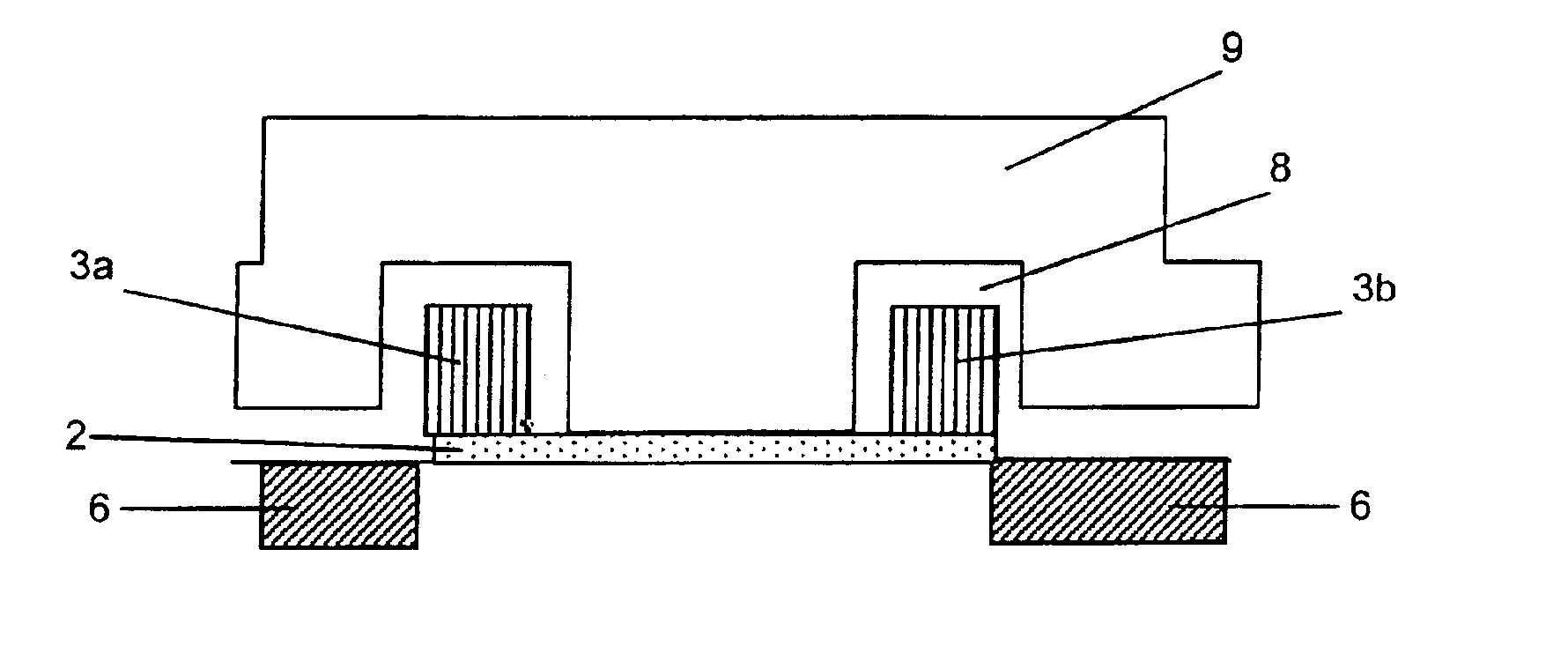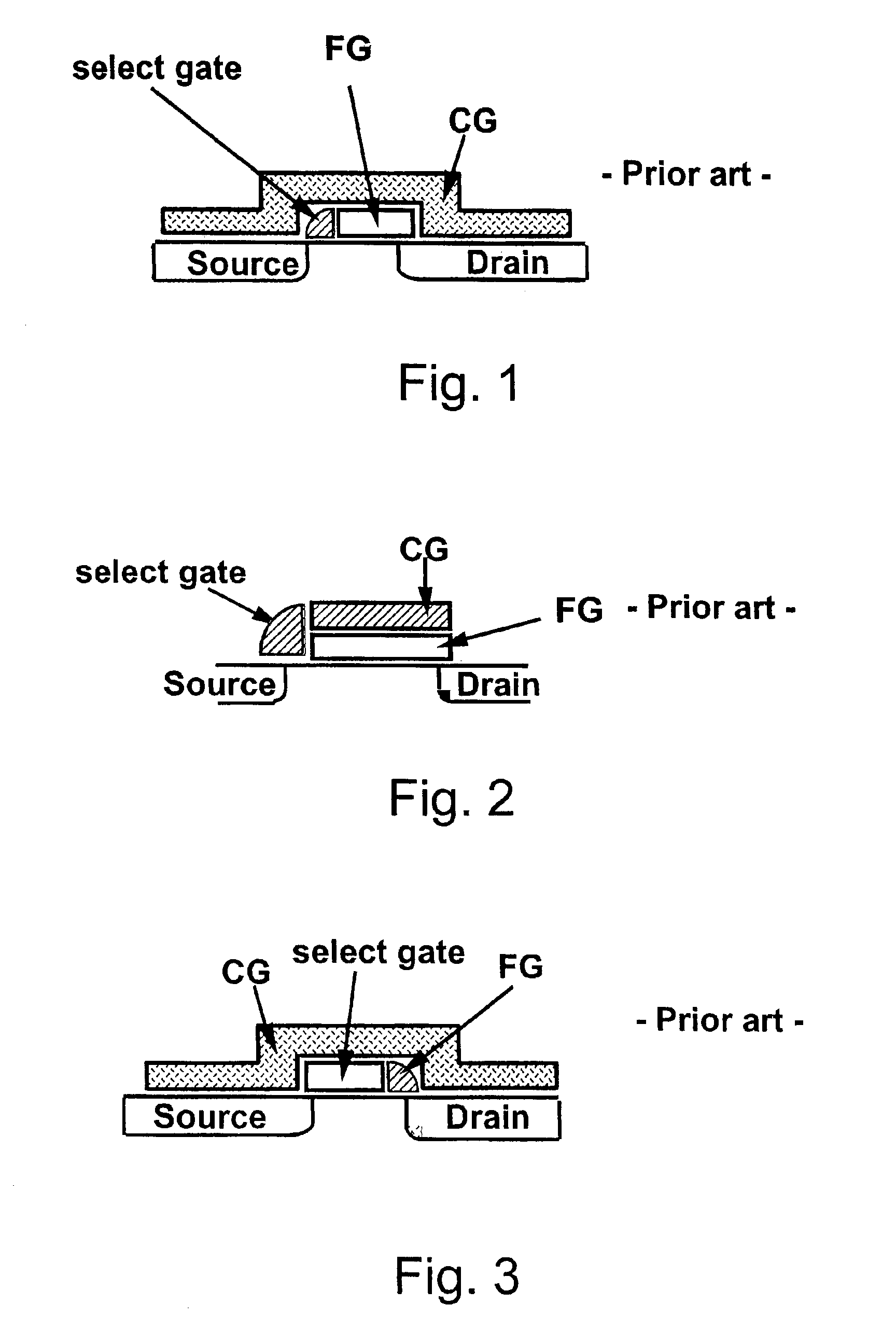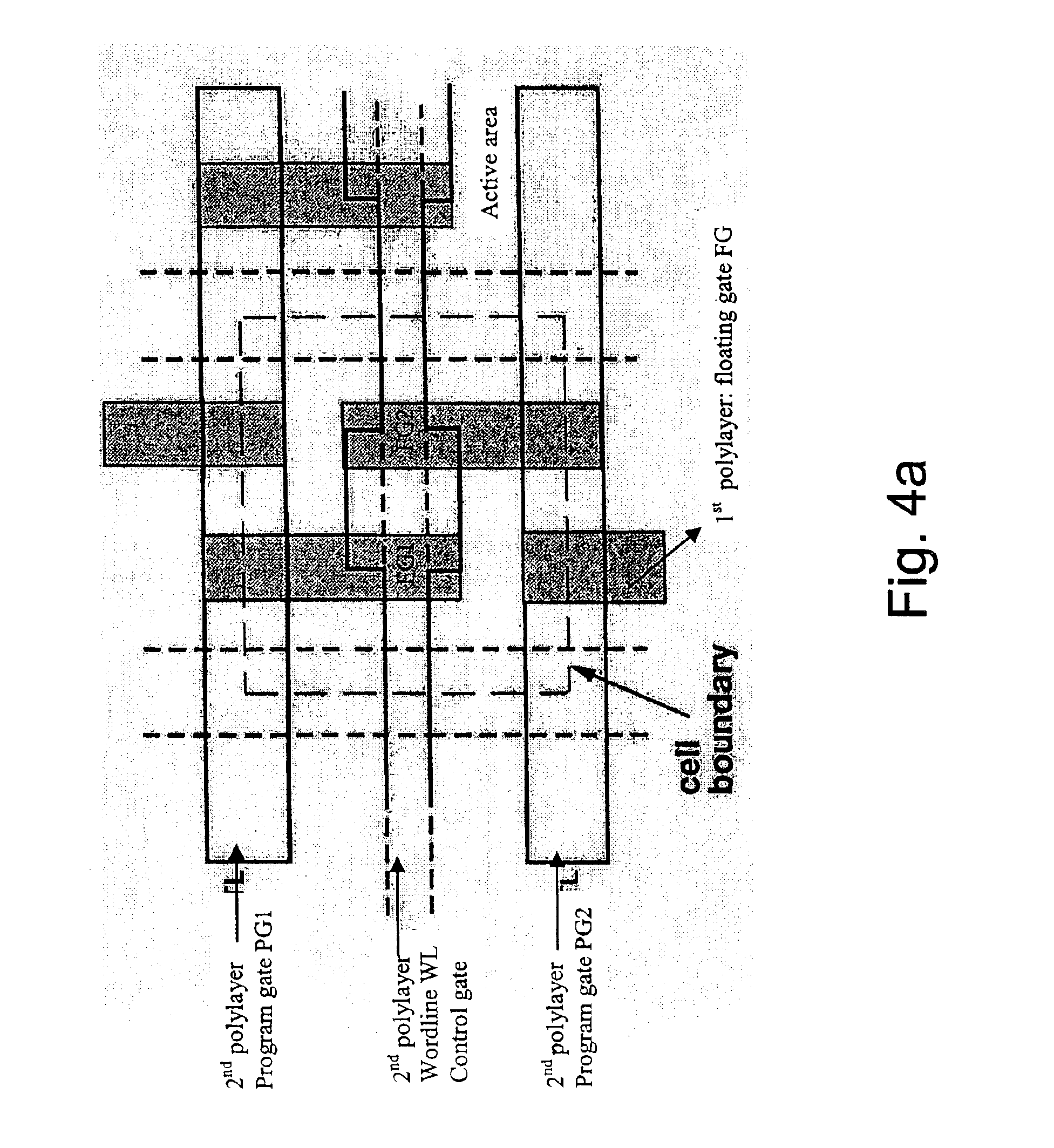Multibit non-volatile memory and method
a non-volatile memory and multi-bit technology, applied in the field of multi-bit non-volatile memory and methods, can solve the problems of reducing the chei efficiency and corresponding programming speed, and it is becoming difficult and harder to generate these voltages on-chip from a high-voltage generator or charge pumping circui
- Summary
- Abstract
- Description
- Claims
- Application Information
AI Technical Summary
Benefits of technology
Problems solved by technology
Method used
Image
Examples
first embodiment
[0113]Table 1: exemplary operating voltages for the memory array of FIG. 4b using source-side injection for programming
[0114]The device operates in a similar way to that of the HIMOS® devices described in the U.S. Pat. No. 5,583,811, if considering the program line (PL) of the opposing bit, i.e. the bit of the dual bit that is not programmed, as a transfer gate which is merely biased above the threshold-voltage window in order to access the addressed bit regardless of the value of the opposing bit. This explains the value of 3V in the table of operating voltages below: the threshold voltage is typically changed between −2.5V and +1 or 2V for HIMOS® and, therefore, 3V is sufficient in order to turn on the channel which is in series with the addressed bit in both read and write operations.
[0115]According to an aspect of the present invention, the problem concerning misalignment on the control gate channel length of the split-gate structure is avoided and the cell can be scaled down to...
second embodiment
[0130]In another embodiment of the present invention an alternative to the method of the second embodiment is illustrated by FIGS. 5h-l. In the former embodiment, the width of the gate formed in the first polysilicon layer 3 is determined by the width of the spacer 5 formed in the second hardmask 5. As outlined above, this spacer 5 width is not determined by the lithographic process used, but is a function of layer thickness and etch processes. As illustrated in FIG. 5e the junction constituting the bitline 6 is then formed selfaligned to this floating gate 3a-b formed in the first polysilicon layer 3.
[0131]In a simplified process flow the floating gate FG 3a-b is formed using known patterning processes, see “Microlithography, Science and Technology”, J. R. Sheats et al. Marcel Decker, 1998. As shown in FIG. 5h a first polysilicon layer 3 is formed on top of the dielectric layer 2. The dielectric layer may for example be an ONO layer. As shown in FIG. 5i the width of the patterned f...
third embodiment
[0140]FIG. 5l shows a topview of the memory array 20 according to this third embodiment after the step of implanting the p+ field implant 11. The p+ field implant 11 electrically insulates the channel regions under the wordlines 9. The bitlines 6 are covered by either the wordline or by the planarizing dielectric 8. By removing the first polysilicon 3 in between the wordlines 9 to separate the floating gates 3, a part of the substrate 1 is exposed. This part is not covered by the planarizing dielectric 8. In this part the p+ field implant 11 can enter the substrate 1. Preferably the p+ implant 11 is given blanket but the substrate 1 area covered by the patterned polysilicon 3 will not be doped.
[0141]A second problem is related to the materials choice of the hardmask layers. First 4 and second 5 hardmask layer should preferably use materials other than oxide and nitride, in order to keep the process compatible if for example an ONO interpoly layer is used, which is to be deposited al...
PUM
 Login to View More
Login to View More Abstract
Description
Claims
Application Information
 Login to View More
Login to View More - R&D
- Intellectual Property
- Life Sciences
- Materials
- Tech Scout
- Unparalleled Data Quality
- Higher Quality Content
- 60% Fewer Hallucinations
Browse by: Latest US Patents, China's latest patents, Technical Efficacy Thesaurus, Application Domain, Technology Topic, Popular Technical Reports.
© 2025 PatSnap. All rights reserved.Legal|Privacy policy|Modern Slavery Act Transparency Statement|Sitemap|About US| Contact US: help@patsnap.com



